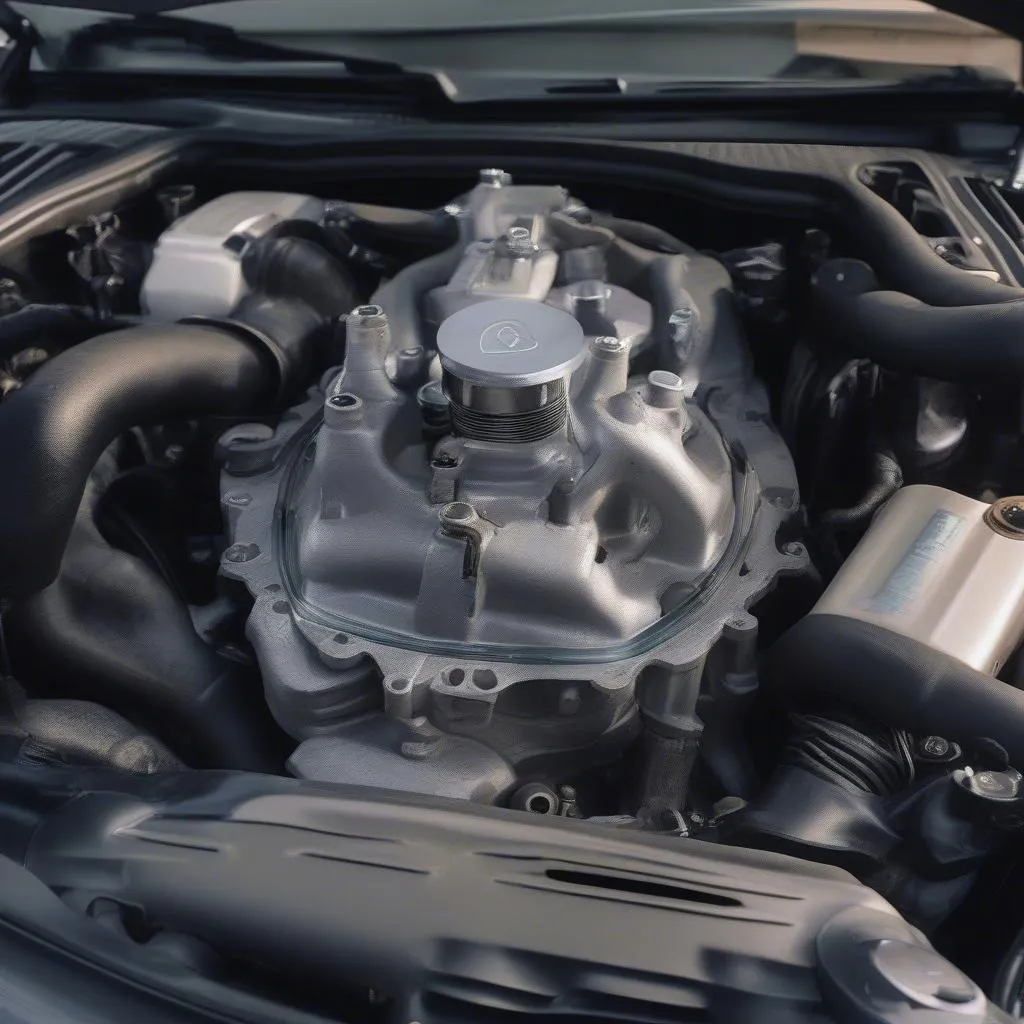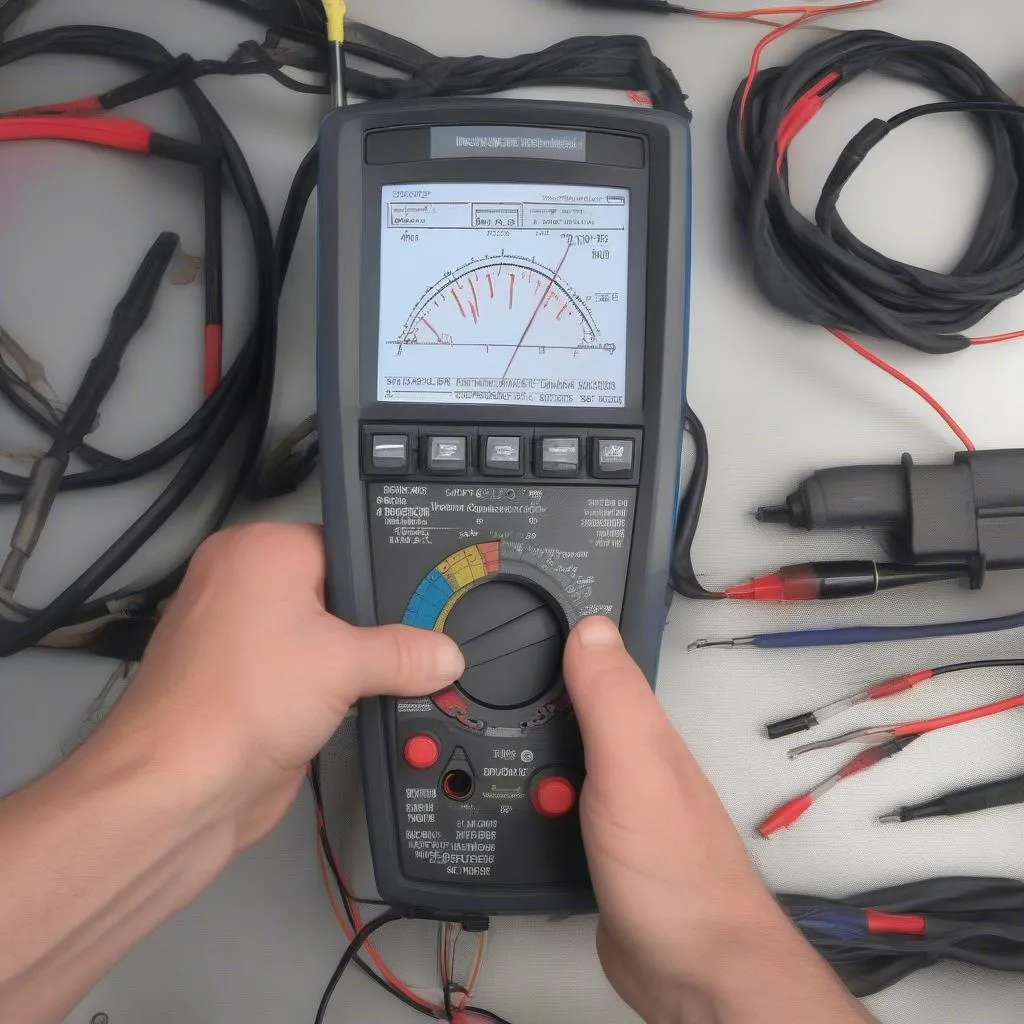Experiencing a drooping headlight on your Mercedes Benz? It’s a common issue, often caused by a malfunctioning headlight compressor. While it might seem daunting, diagnosing and even fixing this problem yourself can be more manageable than you think. This guide will walk you through the steps to troubleshoot and potentially resolve the issue, helping you avoid a costly trip to the mechanic.
Understanding the Mercedes Headlight Compressor
Your Mercedes’ headlight leveling system utilizes an air compressor to adjust the angle of your headlights based on the vehicle’s load. This ensures optimal road illumination without blinding oncoming drivers. When this compressor fails, your headlights may sit too low, significantly impacting visibility, particularly during nighttime driving.
Identifying a Faulty Headlight Compressor
Several signs point to a potential headlight compressor problem:
- Drooping Headlights: One or both headlights sit lower than usual, even after adjusting the manual beam leveler.
- Headlight Adjustment Issues: You experience difficulty adjusting the headlight beam using the interior controls.
- Unusual Compressor Noise: You hear a hissing or whirring sound coming from the compressor, often located in the front wheel well area.
“One of the first things I check when a Mercedes comes in with headlight problems is the compressor. It’s a common culprit,” says Michael Thompson, a veteran automotive technician with over 20 years of experience working on European cars, in his book, “Troubleshooting European Auto Electrical Systems.”
Tools and Materials You’ll Need
Before you begin, gather these tools:
- Socket Set: To access and remove the compressor.
- Multimeter: To test for power and ground at the compressor.
- Air Hose (Optional): To test compressor functionality.
- Replacement Compressor (If Necessary): Ensure compatibility with your Mercedes model.
 Mercedes Headlight Compressor
Mercedes Headlight Compressor
Troubleshooting and Repairing the Compressor
- Locate the Compressor: Consult your owner’s manual for the exact location, but it’s typically in the front wheel well, behind the bumper.
- Check Fuses and Relays: Refer to your owner’s manual to identify the correct fuses and relays associated with the headlight system. Use the multimeter to test for continuity.
- Test for Power and Ground: Using the multimeter, check for power and ground signals at the compressor’s electrical connector. No power or ground suggests wiring issues.
- Test Compressor Functionality (Optional): Connect an air hose to the compressor’s output and briefly apply air pressure. If the headlights adjust, the compressor itself is likely faulty.
- Replace the Compressor (If Necessary): Disconnect the electrical connector and air lines. Remove the old compressor and install the new one, reversing the removal steps.
Pro Tip: When reconnecting air lines, ensure they are properly secured to prevent leaks.
 Testing Mercedes Headlight Compressor
Testing Mercedes Headlight Compressor
FAQs about Mercedes Benz Headlight Compressor Issues:
Q: Can I drive with a faulty headlight compressor?
A: While technically possible, it’s strongly discouraged. Driving with low headlights significantly reduces visibility and poses a safety hazard, especially at night.
Q: What are common error codes associated with a faulty headlight compressor?
A: Error codes can vary, but some common ones include codes related to headlight range control or self-leveling system malfunctions. Using a professional-grade OBD-II scanner like those offered by CARDIAGTECH can help you pinpoint the issue.
Q: Is it difficult to replace the compressor myself?
A: The complexity varies depending on your Mercedes model. While mechanically inclined individuals may find it manageable, consulting a professional mechanic is recommended if you’re unsure.
Conclusion
Addressing a malfunctioning headlight compressor is essential for safe driving in your Mercedes Benz. By following these troubleshooting steps, you can potentially diagnose and even fix the problem yourself. However, if you’re uncertain about any step, it’s always best to consult a qualified mechanic to ensure the repair is done correctly and safely.
Remember, a well-maintained vehicle is a safer vehicle. Don’t hesitate to address any headlight concerns promptly to enjoy peace of mind on the road.


